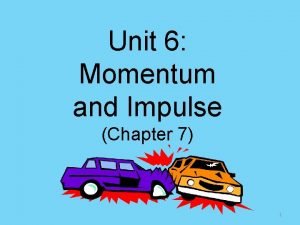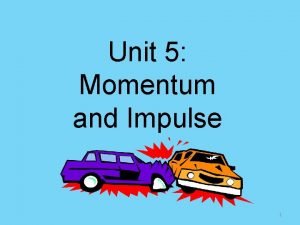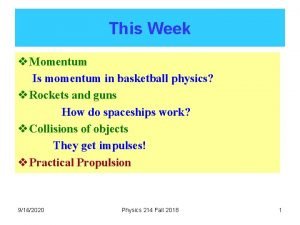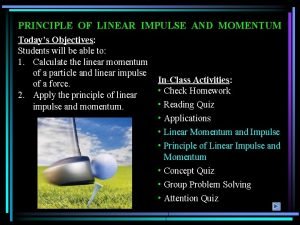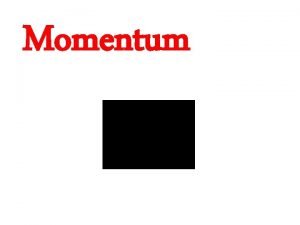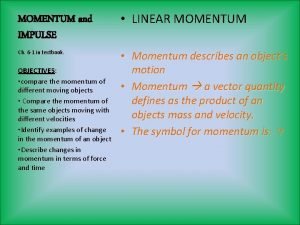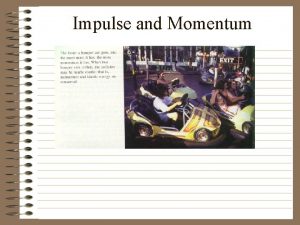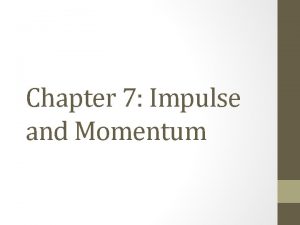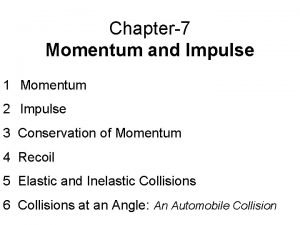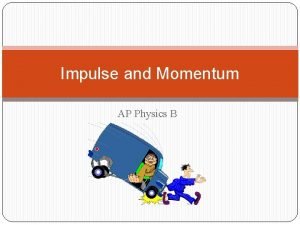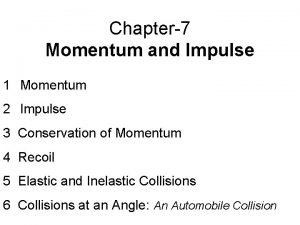Impulse and Momentum Dr Ajay Kumar Professor School









- Slides: 9

Impulse and Momentum Dr Ajay Kumar Professor School of Physical Education DAVV Indore

Momentum and Collisions l This chapter is concerned with inertia and motion. Momentum helps us understand collisions. l Elastic Collisions - objects rebound l Inelastic Collisions - object stick together an usually become distorted and generate heat

Momentum l Momentum = mass ´ velocity l p = mv l Momentum is a vector quantity.

l A large truck has more momentum than a car moving at the same speed because it has a greater mass. l Which is more difficult to slow down? The car or the large truck? l Large Momentum Examples: – Huge ship moving at a small velocity – High velocity bullet

Impulse l In order to change the momentum of an object you must apply a force over some time interval. l Impulse = Force ´ time interval l = Ft

Impulse and Momentum l Impulse = Change in Momentum l l F Dt = mvf - mvi

Conservation of Momentum l This means that the momentum doesn’t change. l Recall that F t = D(mv) l In this equation, F is the "external force". l Internal forces cannot cause a change in momentum.

Examples l Conservation of Momentum: If there are no external forces, the total momentum for a system remains unchanged. l Example 1: a person sitting inside a car pushing against the dashboard l Example 2: a bullet fired from a rifle l Example 3: a rocket in space l m 1 u 1 + m 2 u 2 = m 1 v 1 - m 2 v 2

Coefficient of Restitution l For perfectly elastic collisions e=1. l If the two object stick together, e=0. l Otherwise 0<e<1.
 Physics 03-02 potential energy and conservative forces
Physics 03-02 potential energy and conservative forces Unit 6 momentum and impulse
Unit 6 momentum and impulse Unit of momentum and impulse
Unit of momentum and impulse Momentum in basketball physics
Momentum in basketball physics Linear impulse momentum equation
Linear impulse momentum equation Linear impulse
Linear impulse Importance of momentum and impulse
Importance of momentum and impulse Use of momentum and impulse as safety equipment in vehicles
Use of momentum and impulse as safety equipment in vehicles Which has a greater momentum a truck with a mass of 2250 kg
Which has a greater momentum a truck with a mass of 2250 kg Importance of momentum and impulse
Importance of momentum and impulse

